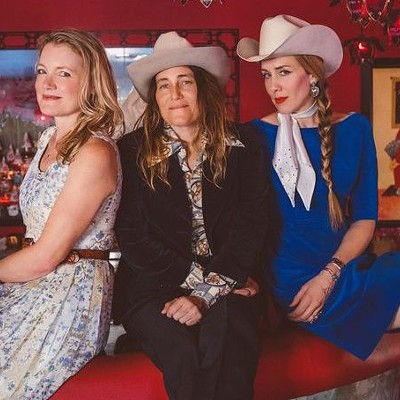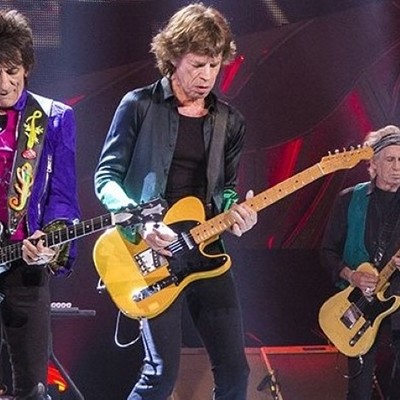The Youngs: The Brothers Who Built AC/DC By Jesse Fink, 320 pp., $25.99.
The mere mention of AC/DC to even the most casual of fans will bring up one image: the short, frenetic guitarist Angus Young dressed as a schoolboy and running around the stage like a maniac -- even while pushing 60 years of age, and sometimes making his own devil horns. He may not be the lead singer, but when the crowd chants "AN-GUS! AN-GUS!" during "Thunderstruck," there's no doubt as to who the real front man is for the group.
Diehard fans and writers who know a bit more about the band dynamics might tell you that it's quiet rhythm guitarist Malcolm who really calls the shots, while overlooking them both is older brother George.
George was never in the group, but was a crucial developer of the band's sound (especially in the early days) and the whiz in the studio, utilizing knowledge first learned as a member of the Easybeats, who had a worldwide hit in 1966 with "Friday on My Mind."
Fink's book is a mostly solid addition to the growing AC/DC canon, but its title is definitely a misnomer.
The famously private Youngs, who have always exhibited a "close ranks" mentality to the press or any outsider, did not speak to Fink for this book, as they have not for any other. Nor is there much in the narrative about the actual working relationships between the three Youngs over the decades.
Instead, Fink bases the book on a series of new interviews with those who have had mostly previous associations with the group: management, record-company reps, other musicians, DJs and at least one former actual member, bassist Mark Evans.
Fink also swings back in forth from hardcore hero worship of the band to biting criticism of their dealings, and back again. He accuses other authors of performing "journalistic fellatio" on the group, but reading his introduction makes that observation seem hypocritical.
So what the reader gets with The Youngs are mainly others talking about the Youngs. Almost to a person, they praise the group's music and longevity, but many also seem to have seemingly legitimate axes to grind as to their treatment by the brothers. The Youngs, as written here, alternately toss people aside when they are no longer needed or fail to recognize contributions.
Take David Huerta, a 25-year-old graphic designer in 1977 who created the hugely famous AC/DC logo for a one-off record project. That the logo sprang from his mind is not in doubt -- he's got the original artwork.
But other than his initial commission, he has not received a single penny from the hundreds of millions of dollars that his work has generated, even when it is the only thing on a T-shirt, sticker, baseball cap or baby's onesie. Surprisingly, he's not bitter, nor has he ever pursued a lawsuit. But the Youngs could have given him something, even if they aren't legally obligated to do so.
Timewise, the book only covers events pretty much only up to 1980's Back In Black with a sprinkling of info about the ensuing three and a half decades; 1990's "Thunderstruck" gets namechecked as the band's last truly great song. That makes for a less-than-complete picture of the Youngs, but it also frees pages to concentrate on the "early days."
Perhaps the book's most tantalizing theory -- thrown out, sort-of hashed out, but never truly laid out in concrete -- is that Bon Scott wrote some or most of the material that would appear on Back in Black -- the scribblings of now-familiar lyrics and choruses ostensibly found from his notebooks and used by the Youngs, without credit, after Scott died from alcohol poisoning and "death by misadventure."
If true, that would be a real bombshell, with Scott penning the words that would appear on a record that's always been positioned as a "tribute" to him. Also noted is Scott's precarious position in the group at the time of his demise, with several vocalists claiming they auditioned to be Scott's replacement while he was still breathing.
"Today, AC/DC is largely about perpetuating a fiction," Fink sums up toward the end of The Youngs.
And while many may not agree with his assessment that the band has essentially made no quality music for three and a half decades and exists today more to sell T-shirts and give cred to teenagers than exist and evolve an active group, he does gets credit for giving voice to many who have been part of the AC/DC story, but not really spoken out until now.
ROCKS OFF'S GREATEST HITS
The Ask Willie D Archives Houston's Top 10 Hipster Bars, Clubs & Icehouses 2014 Today's 10 Most Promising Young Metal Bands Hip-Hop's Seven Best Breakup Songs Houston's Top 10 Rooftop Bars and Lounges
Follow @hprocksoff






